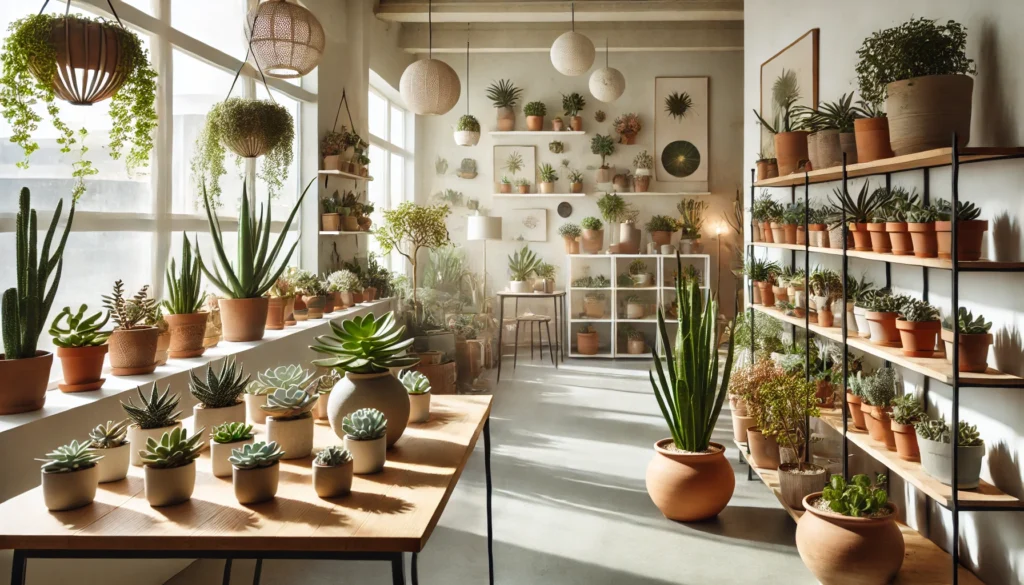
10 Best Indoor Succulents That Need Little Water: Easy Care Guide
Indoor plants add a touch of greenery to any space, but not everyone has the time or energy to care for high-maintenance houseplants. That’s where indoor succulents that need little water come in. These hardy, drought-tolerant plants thrive on neglect, making them perfect for busy plant lovers or those new to gardening. Whether you want to brighten up your home or office with minimal effort, this guide will introduce you to the 10 best low-water succulents that require little maintenance while still looking stunning. Keep reading to find the perfect easy-care succulent for your indoor space!
Table of Contents
ToggleWhy Choose Low-Water Indoor Succulents?
Low-water indoor succulents are the perfect choice for plant lovers who want beauty with minimal effort. These hardy plants thrive in dry conditions, making them ideal for busy individuals, beginners, or anyone looking to reduce water usage.
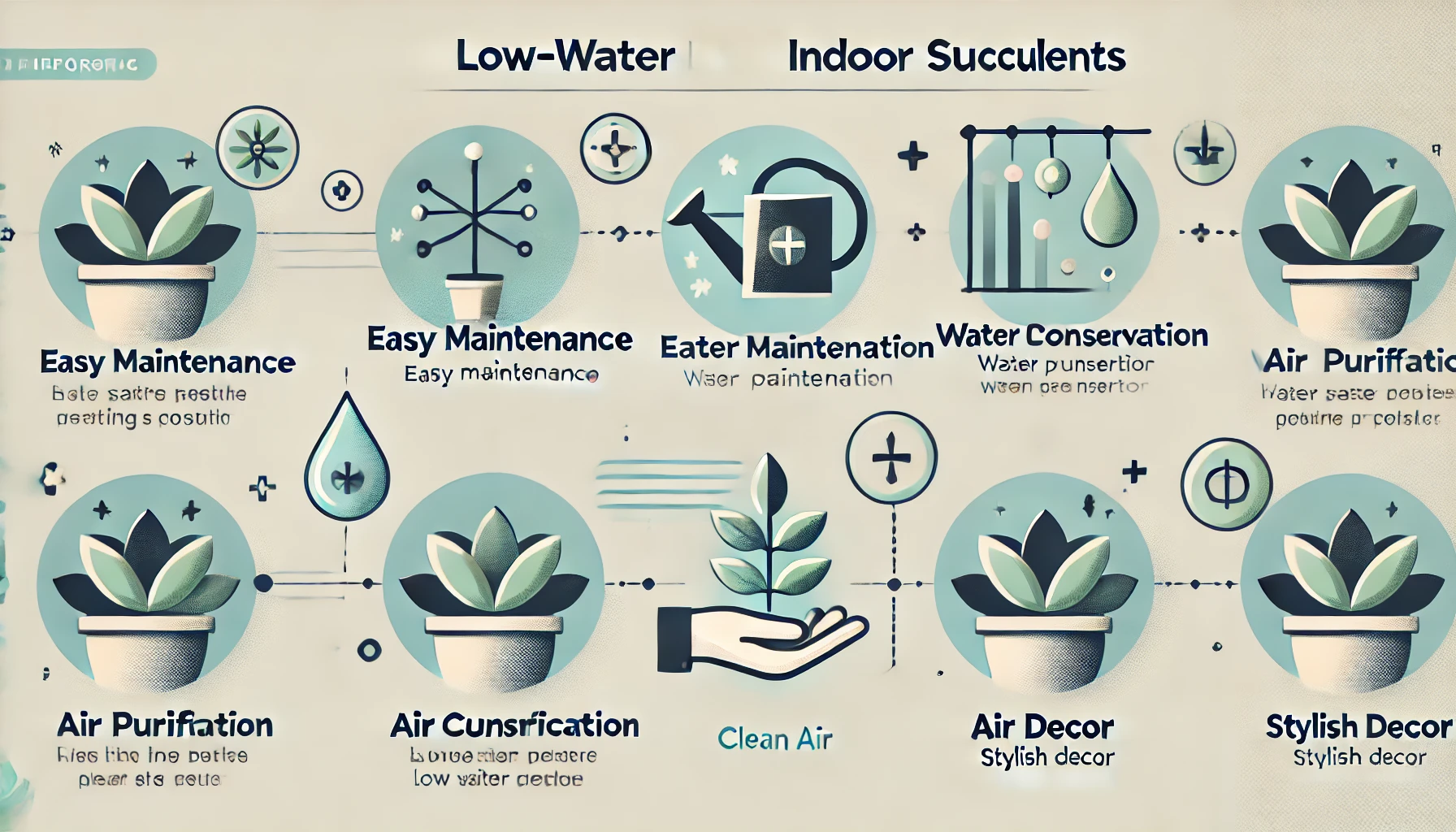
Easy to Maintain
Succulents store water in their leaves, meaning they don’t need frequent watering. Most varieties only require watering every two to three weeks, making them nearly hassle-free.
Perfect for Indoor Environments
They adapt well to indoor conditions, thriving in bright, indirect light. Unlike many houseplants, they can tolerate occasional neglect, making them an excellent option for those who travel or forget to water regularly.
Water Conservation
Low-water succulents help conserve water, which is especially important in drought-prone areas. Choosing these plants supports sustainable gardening while keeping your indoor space green and vibrant.
Air-Purifying Benefits
Many succulents, such as aloe vera and snake plants, improve indoor air quality by filtering toxins and releasing oxygen, contributing to a healthier living environment.
Stylish and Versatile
With their unique shapes, colors, and textures, succulents add a modern and stylish touch to any home or office. They fit well in decorative containers, vertical gardens, or terrariums, enhancing aesthetics effortlessly.
Final Thoughts
Low-water indoor succulents offer beauty, sustainability, and ease of care. Whether you’re a beginner or an experienced plant enthusiast, these resilient plants are a smart choice for any indoor space.
Essential Care Tips for Indoor Succulents
Taking care of indoor succulents is simple when you follow the right steps. These plants thrive with minimal maintenance, but a few key factors ensure they stay healthy and vibrant.
Provide Proper Lighting
Succulents need bright, indirect light to thrive. Place them near a sunny window with at least 4–6 hours of light daily. If natural light is limited, use a grow light to prevent stretching and weak growth.
Water Sparingly
Overwatering is the biggest mistake with succulents. Water only when the soil is completely dry—usually every two to three weeks. Use the “soak and dry” method: water thoroughly, then let excess water drain out. Never let the plant sit in standing water.
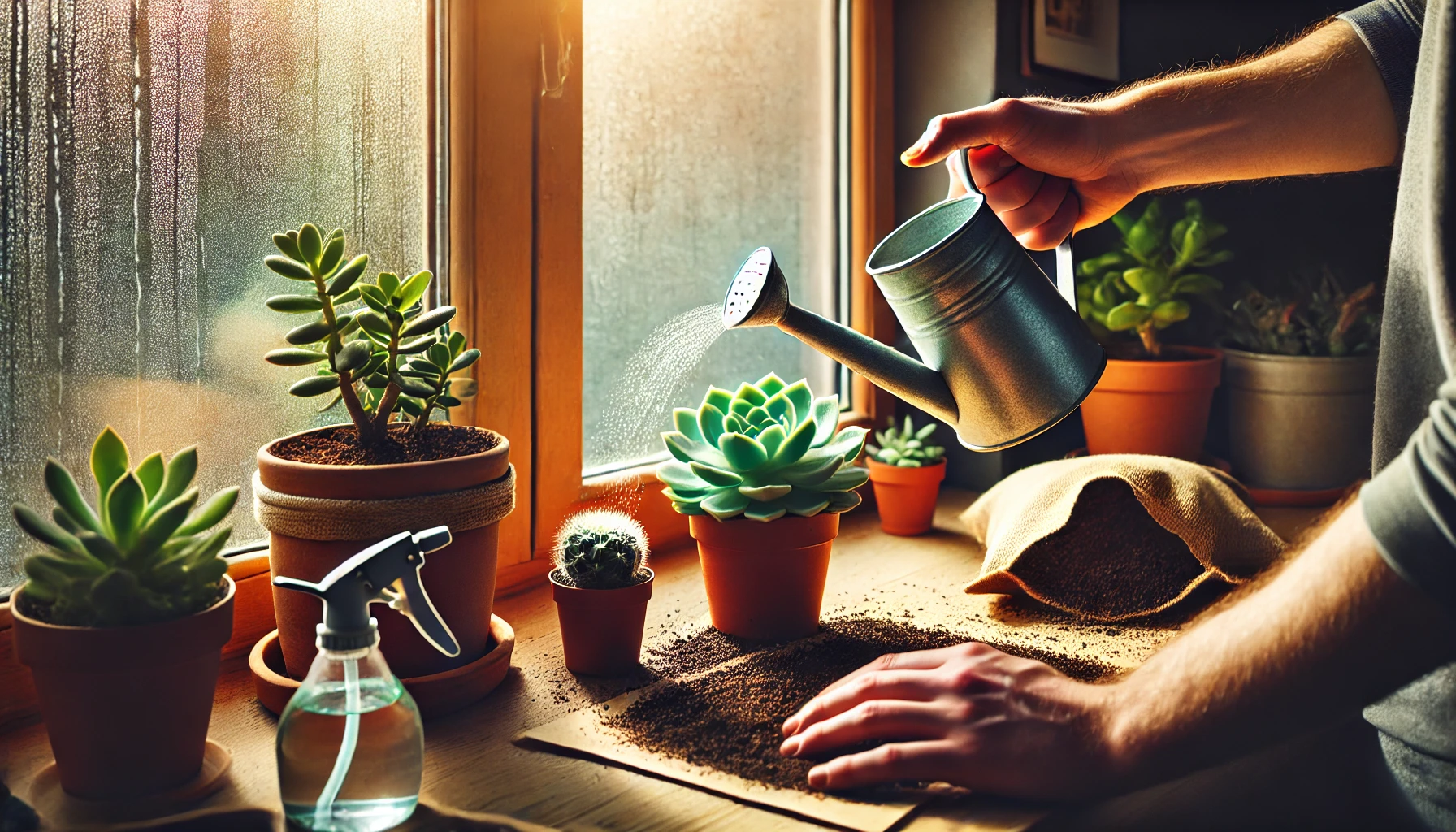
Choose the Right Soil
Succulents need fast-draining soil to prevent root rot. Use a cactus or succulent mix, or create your own by mixing potting soil with sand or perlite for better drainage.
Use Proper Containers
Select pots with drainage holes to allow excess water to escape. Terracotta or ceramic pots are great choices since they absorb moisture, preventing excess dampness around the roots.
Maintain Ideal Temperature and Humidity
Succulents prefer temperatures between 60–80°F (16–27°C) and low humidity. Keep them away from cold drafts, heating vents, and humid areas like bathrooms to prevent stress.
Fertilize Occasionally
Feed succulents with a diluted, balanced fertilizer once every 2–3 months during the growing season (spring and summer). Avoid over-fertilizing, as this can lead to weak, leggy growth.
Watch for Pests and Diseases
Check for pests like mealybugs and spider mites. Wipe leaves with a cotton swab dipped in alcohol or use insecticidal soap to remove infestations. If leaves turn mushy or black, it may be a sign of overwatering or root rot.
10 Best Indoor Succulents That Need Little Water
If you’re looking for beautiful, low-maintenance plants, these 10 indoor succulents thrive with minimal watering. They are perfect for beginners and busy plant owners.
Aloe Vera
Aloe vera is not only easy to grow but also has medicinal benefits. It stores water in its thick leaves and needs watering only every 2–3 weeks.
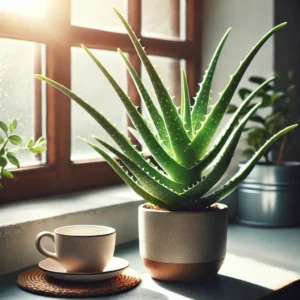
Jade Plant (Crassula ovata)
Known for its glossy, round leaves, the jade plant is highly drought-tolerant. It grows best in bright light and only needs water when the soil is completely dry.
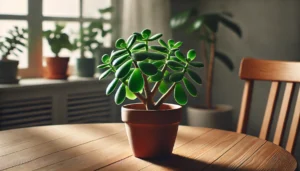
Snake Plant (Sansevieria trifasciata)
This tough succulent thrives in low light and requires watering only once a month. It also purifies indoor air by removing toxins.
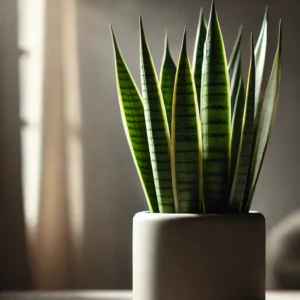
Zebra Haworthia (Haworthia fasciata)
With its striking striped leaves, this small succulent needs very little water and does well in indirect light, making it ideal for desks and shelves.
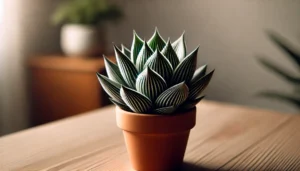
Burro’s Tail (Sedum morganianum)
This trailing succulent has plump, cascading leaves that store water efficiently. It prefers bright light and occasional watering.
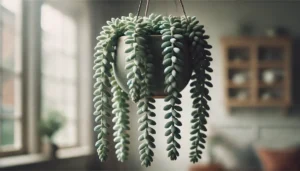
Panda Plant (Kalanchoe tomentosa)
Soft, fuzzy leaves make the panda plant unique. It’s a slow-growing, drought-resistant succulent that thrives with minimal care.
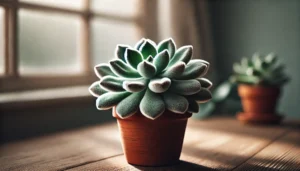
String of Pearls (Senecio rowleyanus)
This eye-catching succulent has trailing, bead-like leaves that hold moisture well. It only needs watering every two weeks.
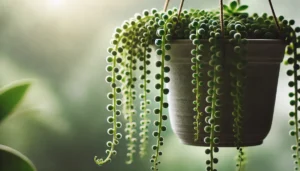
Echeveria
Known for its rosette shape, echeveria is a popular indoor succulent that survives on little water and bright, indirect sunlight.
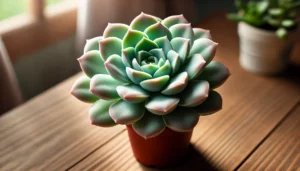
Lithops (Living Stones)
These unique, stone-like succulents require very little water—sometimes only once every few months. They thrive in well-draining soil and plenty of sunlight.
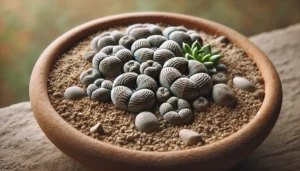
Christmas Cactus (Schlumbergera)
Unlike most succulents, this one blooms beautifully with proper care. It prefers indirect light and needs watering only when the soil is dry.
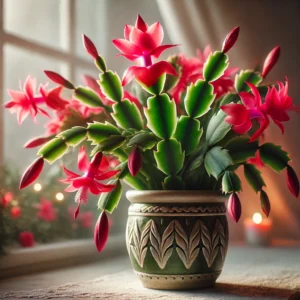
Common Mistakes to Avoid When Caring for Indoor Succulents
Even though succulents are low-maintenance, certain mistakes can harm their growth. Avoid these common errors to keep your indoor succulents healthy and thriving.
Overwatering
The biggest mistake is watering too often. Succulents store water in their leaves, so they don’t need frequent watering. Overwatering leads to root rot, which can kill the plant. Always let the soil dry out completely between waterings.
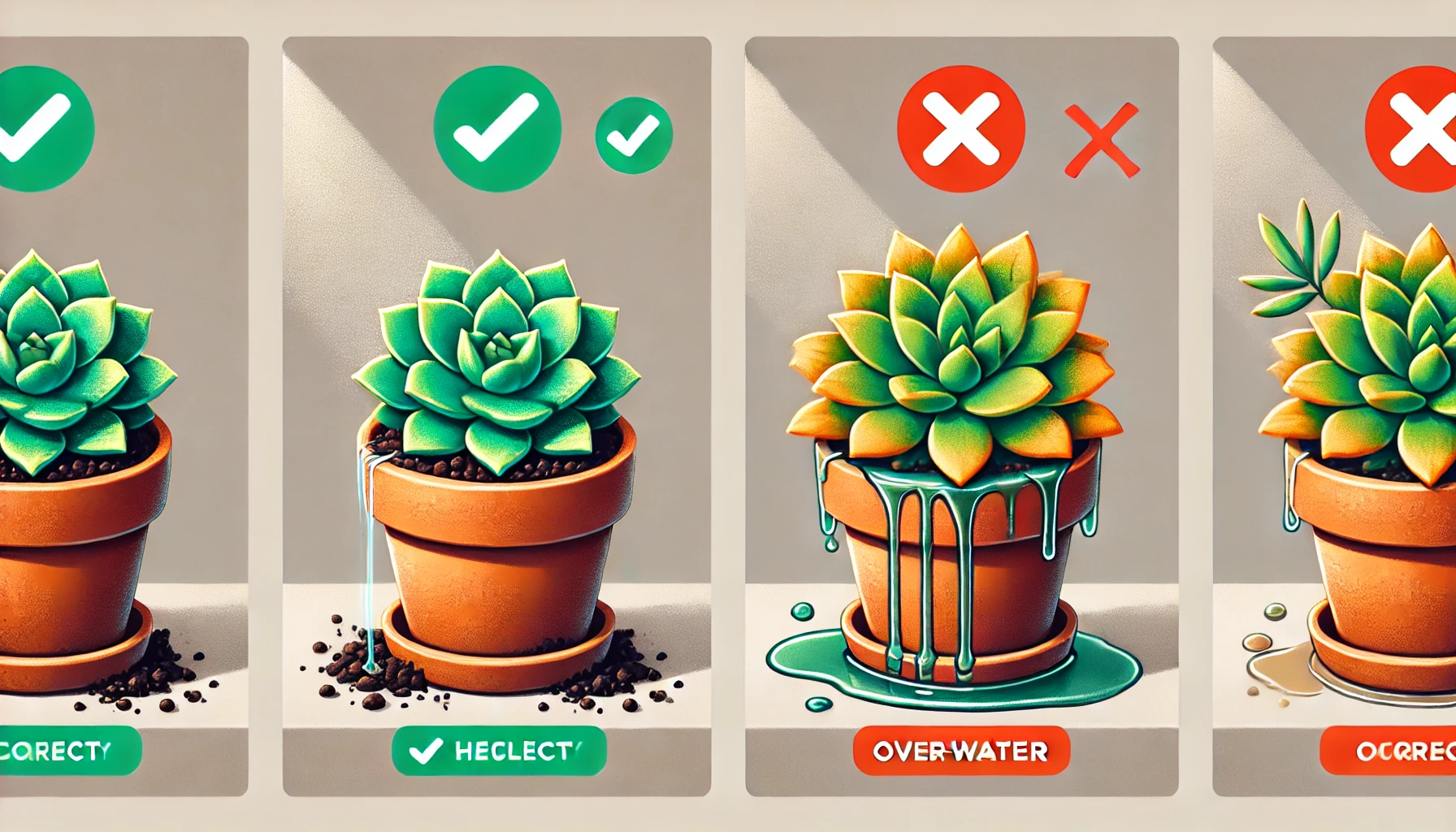
Using the Wrong Soil
Regular potting soil holds too much moisture, which can suffocate the roots. Instead, use a well-draining cactus or succulent mix to prevent excess moisture retention.
Lack of Proper Drainage
Planting succulents in containers without drainage holes traps water, causing root rot. Always use pots with drainage or add a layer of gravel at the bottom to improve airflow.
Insufficient Light
Succulents need bright, indirect light to thrive. Keeping them in low-light areas can cause leggy growth and weak stems. Place them near a sunny window or use grow lights if natural light is limited.
Ignoring Temperature and Humidity
Succulents prefer warm, dry conditions. Avoid placing them near cold drafts, air conditioners, or humid bathrooms. Sudden temperature changes can stress the plant and lead to leaf drop.
Overcrowding the Pot
Planting too many succulents together can restrict airflow and increase moisture retention, leading to fungal issues. Give each plant enough space to grow properly.
Final Thoughts & Best Practices
Low-water indoor succulents are a smart choice for anyone looking to enjoy greenery without the hassle of frequent watering. Their resilience, unique beauty, and air-purifying qualities make them perfect for homes and offices alike.
Best Practices for Thriving Succulents





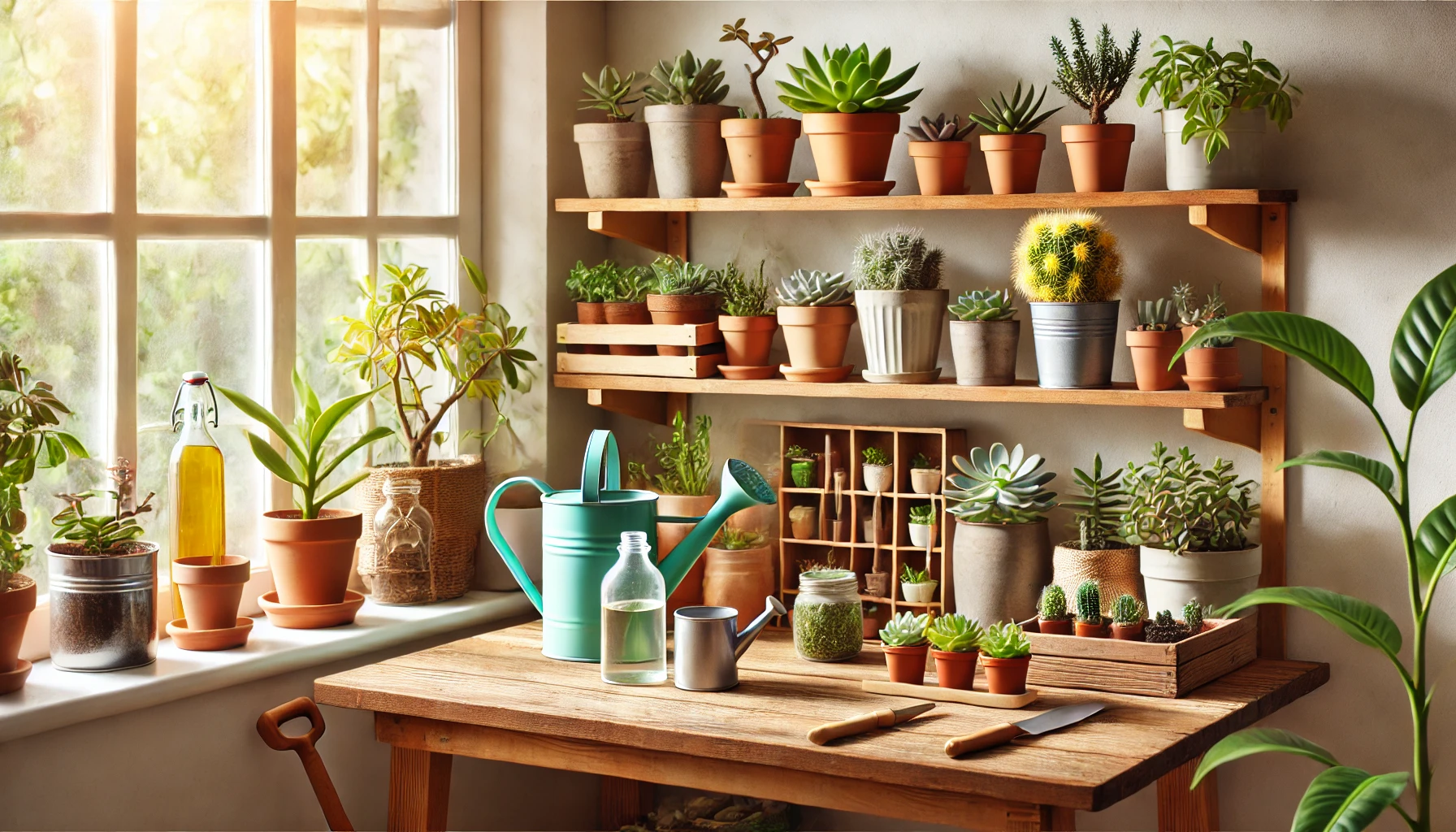
By following these simple yet effective practices, your succulents will stay healthy and vibrant. Whether you’re a beginner or an experienced gardener, these low-maintenance plants are an excellent way to bring nature indoors with minimal effort.
Low-water indoor succulents are the perfect blend of beauty and practicality. They require minimal care, conserve water, and thrive in various indoor settings, making them ideal for both beginners and experienced plant lovers.
By choosing the right soil, providing proper lighting, and watering only when necessary, you can enjoy healthy, vibrant succulents year-round. Whether you’re looking to enhance your home décor or create a low-maintenance indoor garden, these hardy plants are a fantastic choice.
Start your succulent journey today and enjoy the benefits of effortless greenery in your space!
Frequently Asked Questions(FAQ)
What are the best indoor succulents that need little water?
Some of the best low-water indoor succulents include:
- Aloe Vera – Thrives with minimal watering and indirect sunlight.
- Jade Plant – Stores water in thick leaves and needs watering only every few weeks.
- Zebra Haworthia – A hardy, drought-tolerant succulent with striking patterns.
- Snake Plant – Extremely low-maintenance and can survive long periods without water.
- Echeveria – Beautiful rosette-shaped succulent that requires minimal care.
How often should I water indoor succulents that need little water?
Watering frequency depends on the environment, but most succulents only need watering every 2–3 weeks. Always check if the soil is completely dry before watering. Overwatering is the most common mistake.
Do low-water succulents need direct sunlight?
Most low-water indoor succulents thrive in bright, indirect light. Some, like jade plants and aloe vera, can tolerate a few hours of direct sunlight, but prolonged exposure may cause sunburn.
What kind of soil is best for succulents that need little water?
Use a well-draining cactus or succulent mix. Regular potting soil holds too much moisture, which can lead to root rot. Adding sand or perlite improves drainage.
Can I keep low-water succulents in a bathroom?
Yes, but only if the bathroom gets enough natural light. Many succulents struggle in low-light, high-humidity environments, so choose varieties like snake plants that can tolerate these conditions.
Do indoor succulents improve air quality?
Yes! Many succulents, such as aloe vera and snake plants, help remove toxins from the air and release oxygen, improving indoor air quality.
Why are my indoor succulents turning yellow or mushy?
This is usually a sign of overwatering. Succulents store water in their leaves, and excess moisture can lead to root rot. Ensure proper drainage and let the soil dry out between waterings.
Can I propagate low-water succulents easily?
Yes! Most succulents can be propagated from leaf cuttings or offsets. Simply remove a healthy leaf, let it dry for a few days, and plant it in dry soil. Water sparingly until roots develop.
What is the best temperature for indoor succulents that need little water?
Succulents thrive in temperatures between 60–80°F (16–27°C). Keep them away from cold drafts, heaters, and air conditioners.
Do low-water succulents need fertilizer?
While not required, feeding succulents with a diluted succulent fertilizer once in spring and summer can promote healthy growth. Avoid fertilizing in winter when growth slows down.
